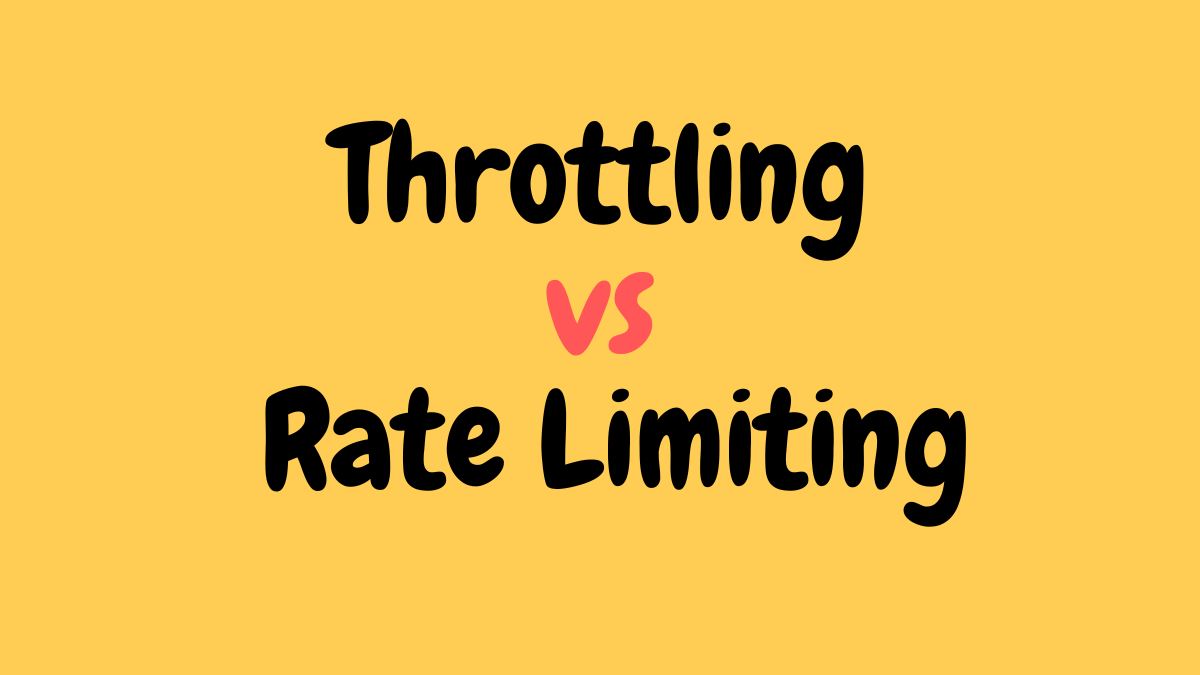Throttling vs Rate Limiting: Key Differences & When to Use Each
Learn the critical differences between API throttling and rate limiting. Discover when to use each technique, implementation strategies, and best practices for controlling API traffic flow.

# Throttling vs Rate Limiting: Key Differences You Must Know
When building modern APIs or web applications, controlling the flow of traffic is critical. Two common techniques used for this purpose are throttling and rate limiting. While these terms are often used interchangeably, they serve different functions. In this guide, we'll explore throttling vs rate limiting, their key differences, and when to use each method.
# What Is Rate Limiting?
Rate limiting is a technique that defines the maximum number of requests a client can make to an API or server within a specific time window.
For example:
A client can only send 100 requests per minute.
If the client exceeds this limit, the server will reject or block additional requests until the window resets.
# Benefits of Rate Limiting
- • Prevents abuse of APIs and resources
- • Enhances server stability
- • Protects against brute-force attacks
- • Provides predictable resource usage
# Common Use Cases
- • Limiting login attempts to prevent brute-force attacks
- • Restricting API access for free-tier users
- • Controlling resource consumption across multiple users
# What Is Throttling?
Throttling regulates the rate at which requests are processed, rather than outright blocking them. Instead of rejecting excess requests, throttling delays or slows down request handling to maintain system performance.
For example:
A client can send requests, but if the system is overloaded, processing will be delayed to match capacity.
# Benefits of Throttling
- • Ensures fair usage across clients
- • Prevents sudden traffic spikes from overwhelming systems
- • Improves overall user experience by keeping services responsive
# Common Use Cases
- • Streaming services managing playback quality during network congestion
- • APIs adjusting processing speed during peak traffic
- • Web applications balancing load during high demand
# Throttling vs Rate Limiting: The Key Differences
| Feature | Rate Limiting | Throttling |
|---|---|---|
| Definition | Restricts the number of requests | Controls the speed of request handling |
| Behavior | Blocks or rejects excess requests | Delays or slows down processing |
| Goal | Prevent overuse and abuse | Balance load and maintain stability |
| User Impact | Requests may fail or be denied | Requests are delayed but still processed |
| Use Case | Security, abuse prevention | Performance optimization, load balancing |
# When to Use Rate Limiting vs Throttling
Use Rate Limiting when your main goal is to prevent abuse, secure resources, and enforce strict usage policies.
Use Throttling when you want to smooth traffic, protect system performance, and ensure fair distribution of resources without denying service.
In some cases, both techniques are combined: rate limiting to set hard caps, and throttling to control processing speed within those limits.
# Final Thoughts
Understanding throttling vs rate limiting is essential for designing scalable, secure, and user-friendly APIs or web applications.
- • Rate limiting ensures no single client abuses your system.
- • Throttling ensures performance remains stable during demand surges.
By implementing both wisely, you can provide a seamless user experience while protecting your infrastructure.
✅ Want to learn more about API optimization? Stay tuned for our upcoming guides on caching strategies and load balancing.